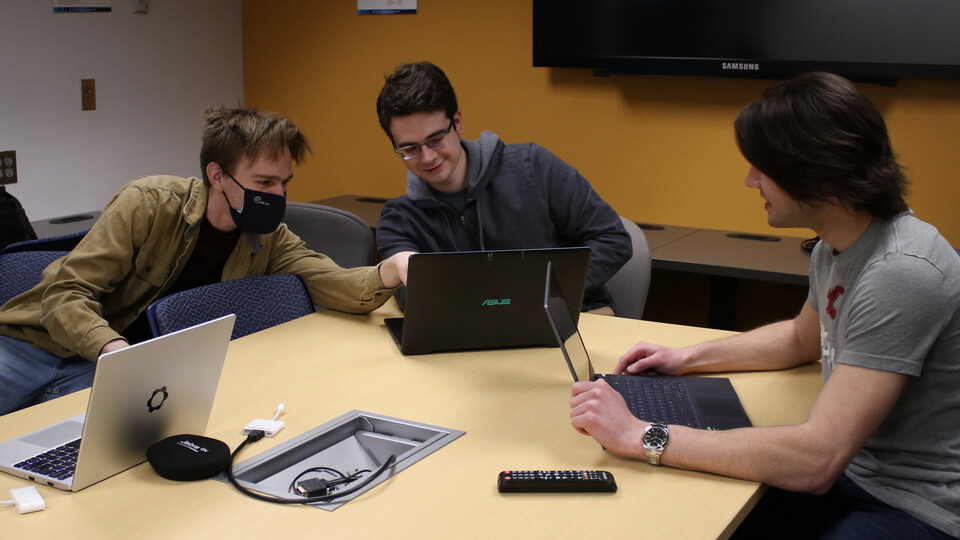
The University of Nebraska–Lincoln is developing a new project that shines light on Nebraska’s international lead in water research.
In a collaboration with the Nebraska Water Center, part of the Daugherty Water for Food Global Institute, and the School of Natural Resources, a team of Senior Design students from the School of Computing is in the process of revamping the Nebraska Vadose Zone program’s current data systems.
The Nebraska Vadose Zone program standardizes collection, processing, analysis and sharing of vadose zone monitoring data. The vadose zone is the interval layer between the crop root zone and the water table that acts as the earth’s skin, regulating the storage, transport and transformation of agrichemicals. Changes in this zone can impact the quality of Nebraska’s groundwater, which is used for drinking water, livestock and crop production, industry and other economically important purposes. With greater understanding of this zone, water managers can better predict contamination and how to implement interventions at the source.
The program’s website currently houses an extensive database of agrichemical results collected from hundreds of sources that date back as far as the 1980s. The website serves as a critical resource for the state’s natural resource managers, producers and citizens, but its information isn’t always easily accessible or manageable. Because data is submitted from multiple sources in a variety of formats, most of it must be manually reviewed and input by staff.
“As we discovered through their process, everything was done by hand, emailed to them or in printed copies,” said Cody Binder, a senior software engineering major in the Senior Design course. “We’re implementing ways to handle these different data sources and automating it for time-saving measures.”
Senior Design is a computing capstone course in which students spend a full academic year working closely with a faculty or industry sponsor to create a product that meets specific technological goals of an organization. Primary goals of this project were to improve the site’s user experience, enable data uploading and verification, and share results through an interactive map feature. Determining the best options for accomplishing these goals required extensive brainstorming and feedback from sponsors.
“Being able to communicate with the people who are directly involved and have access to these resources has been very beneficial,” Binder said. “That kind of experience is really good to have if you’re building something from the ground up.”
Though project plans evolved significantly throughout the creative process, students felt it ultimately resulted in both a better product for the program and educational opportunity for them.
“I think that we did a really good job of being flexible and willing to try different technologies and designs,” said Patrick McManigal, a senior computer engineering major and member of the project team. “It’s been a massive learning experience shifting to new ideas without tunnel vision. That helps find the best solution.”
Not only did the project offer students the chance to develop new skills and build a new technology system from scratch, but it allowed them new insight into previously unfamiliar aspects of the agricultural industry.
“I’m from Chicago and didn’t grow up near farms or anything, so I had no idea about fertilizer seeping into the water table and the nitrate levels,” said Will Swiston, a junior software engineering major. “That was all completely new to me, and it’s been cool to learn.”
Binder agreed that the project has also provided him with new perspective on how the industry is making an impact on many levels, from global to personal.
Bill Browning, project manager, has been fascinated by a different aspect of the project: the way the students have worked together.
“I’m always impressed by how five students who many not know each other can come together to work for a common goal,” Browning said. “Any time you can get five students who are excited to work on a project like this team is, you’ll definitely see results.”
Dan Snow is the Project Lead from the Nebraska Water Center and Mark Mesarch, SNR, is the Web/Database Programmer contact.
by Victoria Grdina | School of Computing
More details at: https://nebraskavadose.unl.edu/